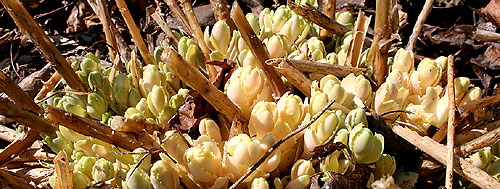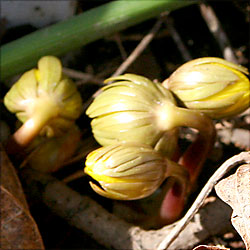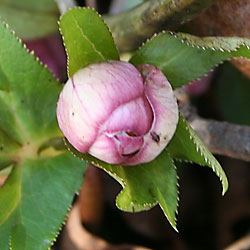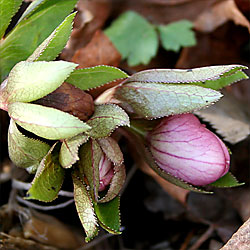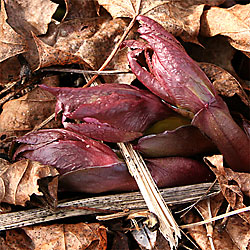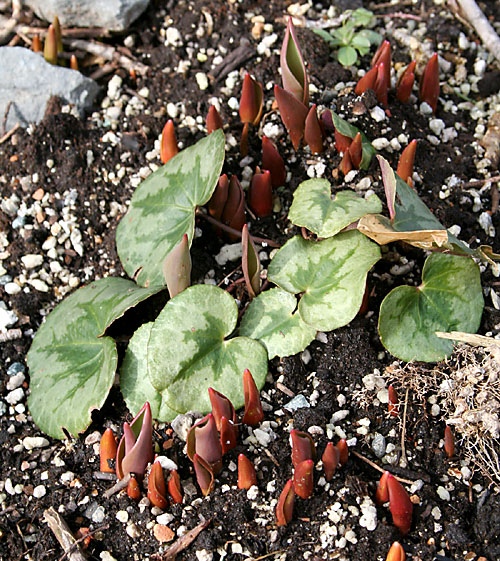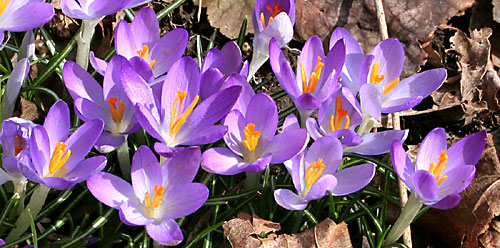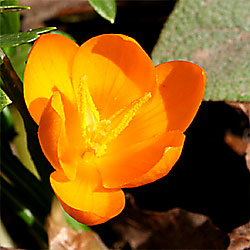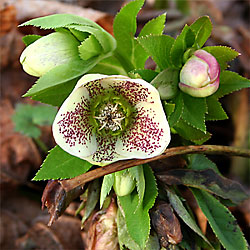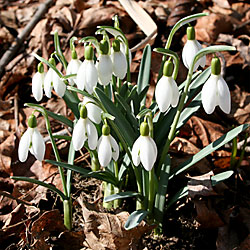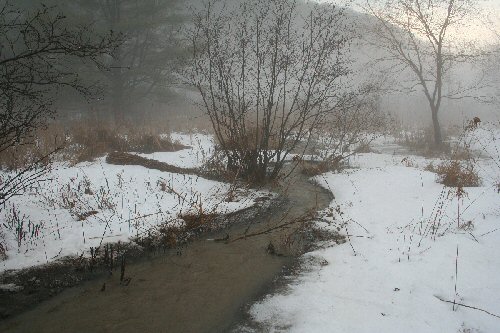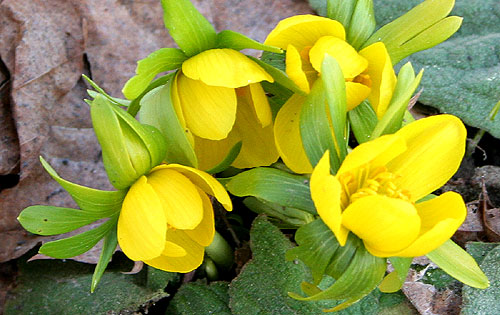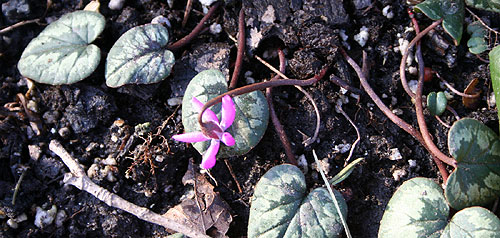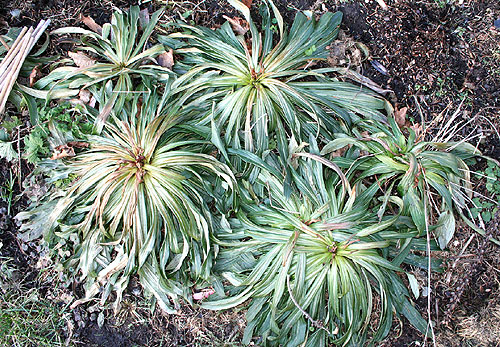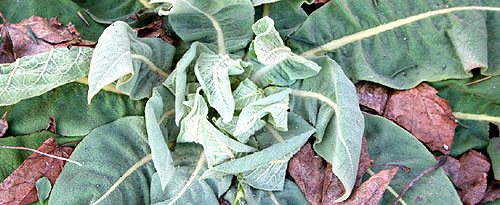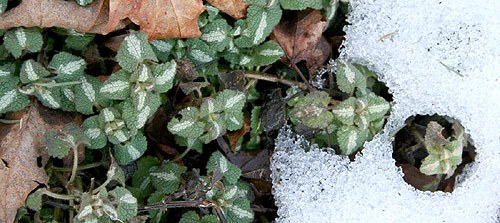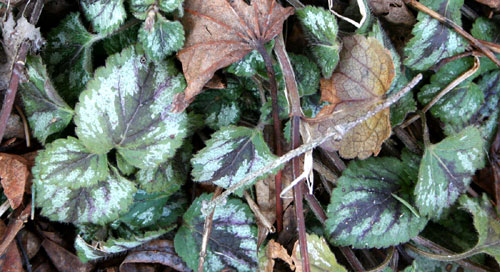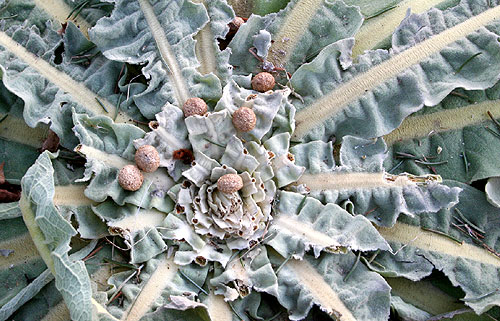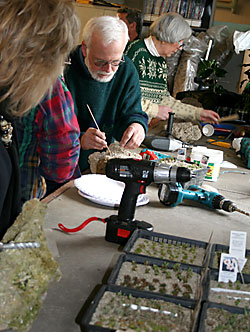 Last Saturday, our local Adirondack Chapter of the North American Rock Garden Society held a tufa workshop with Harvey Wrightman (right), owner of Wrightman Alpines in Kerwood, Ontario. Harvey sells many alpines that are well-suited for tufa gardens, rock gardens, crevice gardens, and troughs.
Last Saturday, our local Adirondack Chapter of the North American Rock Garden Society held a tufa workshop with Harvey Wrightman (right), owner of Wrightman Alpines in Kerwood, Ontario. Harvey sells many alpines that are well-suited for tufa gardens, rock gardens, crevice gardens, and troughs.
Tufa is a relatively soft, high-lime rock that forms when calcium carbonate precipitates from water. It’s also pretty pricey. It’s not to be confused with hypertufa, which is made from concrete and usually some peat. I’ve made a bunch of hypertufa troughs, but this was my first experience with the real thing.
Harvey brought along hunks of tufa that had already been planted. (Did I get any pictures? Of course not.) They mimicked slides he showed in a presentation earlier in the day of alpine plants growing out of rock faces.
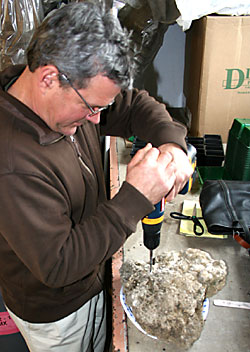 The process is pretty simple. Drill half-inch holes in the tufa, no more than 2 inches deep. Nestle in rooted cuttings (foreground of top picture) along with a mix of crushed tufa and some of the fines leftover from drilling the hole. Water.
The process is pretty simple. Drill half-inch holes in the tufa, no more than 2 inches deep. Nestle in rooted cuttings (foreground of top picture) along with a mix of crushed tufa and some of the fines leftover from drilling the hole. Water.
Once the weather settles, the planted tufa can live outside year-round, with occasional watering when it’s dry. Over time, the plants actually sink their roots right into the rock, and form cute little buns or mats that flower in their particular season.
I’ll add a list of species later when Harvey sends one along. (I was in drilling and photographing mode and didn’t write anything down during the workshop.) Will post some pictures when there’s something more to see than little bits of plant in a rock.
Here are the hunks of tufa before planting.
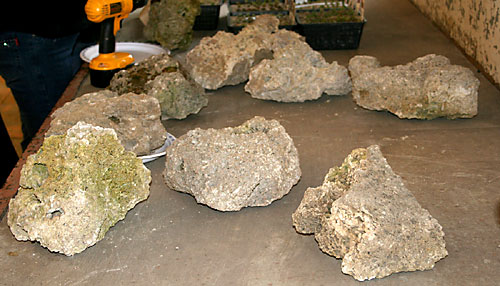
The cuttings, rooted in pumice, before planting.
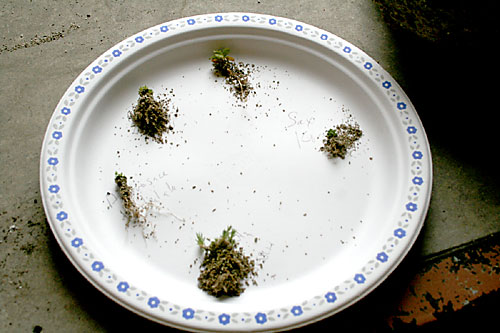
One of the finished products.
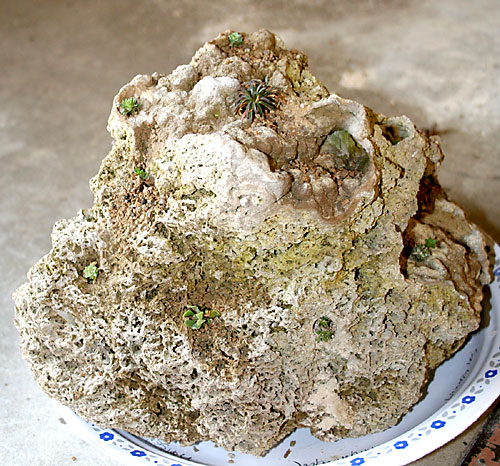
Update: Here’s a short list of some good species for tufa.
- Armeria x ‘Little Penny’
- Asperula boissieri (and other species too)
- Arenaria tetraquetra
- Primula allionii ‘Neon’
- Heterotheca jonesii
- Androsace hirtella
- Campanula bornmuelleri
- Saxifraga x ‘jana’ and other kabschia saxifraga are particularly good in tufa
- Draba acaulis
- Ramonda myconi
Harvey said he’d pass along some mature tufa pictures in a bit. I’ll get them up as soon as I can.

